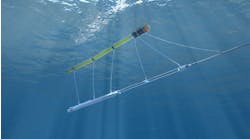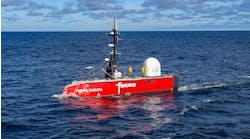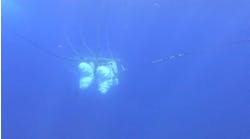Technology has developed capabilities over time
Bob Radtke
Technology International Inc.
Editor’s note: This is the second in a three-part series on Seismic While Drilling. Part I appears in the April Offshore magazine and reviews the primary objectives for seismic while drilling (SWD) services in critical offshore wells. Part III will describe current SWD services and applications, including those that employ surface marine sound sources with receivers on the drill string, and discuss research now underway to develop new generation SWD systems.
Before looking at a the history of drill bit seismic, let’s review a framework for categorizing seismic while drilling (SWD) technologies and look at how SWD relates to other well site information sources.
Theoretically, any mechanical or acoustic energy can create a wavefield for imaging the Earth’s geology. Oil company research into possible replacements for the roller cone bit, such as hydraulic pressure pulsation devices, magnetostrictive and piezoelectric sensors, sparkers, and explosives, creates an issue for SWD. By their nature, these devices generate high frequencies. SWD needs low frequencies (LF) which can transmit thousands of feet ahead of the bit (look-ahead seismic).
The importance of this look-ahead capability was highlighted in 1996, when a Chevron official said, “The time is coming when we will not drill without looking ahead of the bit any more than we would drive at night without headlights – occasionally shining a lamp to see what we hit.”
SWD results equate to data normally obtained by either conventional vertical seismic profiling (VSP) or reverse vertical seismic profiling (RVSP). Conventional VSP surveys use wireline systems with recording tools in the borehole. SWD seismic data can be obtained with the receiver in the drill string and the source at the surface. Such a SWD system can provide continuous check shot information without interrupting drilling. With the SWD source incorporated into the drill string, data can be recorded on the surface. This equates to continuous RVSP while drilling.
SWD can help overcome the higher costs and risks associated with downhole uncertainty and can provide both geophysicists and drillers valuable information for optimizing drilling efficiency and steering to the target, while also better predicting pore pressure ahead of the bit and verifying reservoir models in real-time. In this way, SWD offers economic, as well as technological, advantage.
A primary motivation for SWD is to reduce the risk and cost of deep oil and gas drilling. Another is to provide high resolution imaging for more precise drilling. Drilling in complex geologic settings, especially offshore and in environmentally sensitive locations, often results in surprises, unexpected hazards, and increased costs. The result can be that potential oil and gas reserves are not discovered or are not developed in such a way as to maximize recovery of existing hydrocarbons.
Following is a discussion about how SWD compares and contrasts with other drilling information types, and how it addresses drilling hazards and problems.
Drilling hazards
One of the most feared drilling hazards is a well blowout. Most blowouts result from drilling into formation fluid pressures that cannot be controlled sufficiently by the well and rig equipment and/or response procedures. Fluid influx into the mud column is termed a “kick” and, if severe enough, can require the rig’s blowout preventers to close. If closing the preventers does not control the well, the result is often a blowout.
This figure compares the surface and downhole source location for both VSP and RVSP wireline services with SWD services using either surface or downhole sources.
The only sure way to prevent blowouts is to have better knowledge about the formations ahead of the bit. To reduce the risk of blowouts, drillers must have better information about the properties and fluid pressures of the formations yet to be penetrated by the drill bit. This information must be available early enough to determine where to set casing to maintain well control if the mud weight needs to be increased to control the formation fluid pressure, or in cases where the formations themselves are mechanically unstable. This includes some types of salt.
Surface seismic imaging
For the driller and geologist, 2D or 3D seismic information about the formations yet to be drilled is sketchy and not definitive or detailed enough to satisfy the needs. In exploration, surface or subsea noise (seismic) sources and detectors are used to develop an understanding of the local geology and to identify possible sources of trapped hydrocarbons. While providing some understanding of the geology to be drilled, seismic data generated with surface sources can be limited in vertical resolution, especially at depths below 15,000 ft (4,572 m). Also, in complex geologic regions, the lateral resolution may be insufficient to identify faulting and local discontinuities that can cause drilling problems.
Once a well has been drilled to depth, the formation data obtained while drilling using wireline logs and other wellbore surveys can be used to reinterpret the previously obtained seismic data. This seismic data re-interpretation helps to plan adjacent wells, but does not resolve difficulties that stem from inadequate horizontal, and sometimes vertical, resolution.
Once several wells have been drilled successfully in an area, the data from those wells can be used to refine the interpretation of the seismic data and to produce models of the geologic basin. These models usually depend upon interpolation of data between wells and still suffer from inadequate horizontal, and sometimes vertical, resolution.
Rig data sources
Conventional mud logging can supplement understanding about the formations being drilled by measuring gas in the mud returns and by cuttings analysis. Neither provides real-time information and neither tells the driller what to expect while making hole. They can be useful to update the understanding of formations already drilled and can aid in modifying understanding of the geologic environment, e.g. as input to a basin model.
In cases where logging while drilling (LWD) services are not used, where the LWD tool has failed, or where it is desirable to supplement LWD measurements, conventional wireline logs can measure the characteristics of the formations already drilled. Again, these measurements are after the fact and do not help the driller see below the bit. The wireline methods employed are as follows:
Vertical seismic profiling (VSP): One method to obtaining information about formations yet to be drilled in the vicinity of the wellbore is VSP, which uses seismic sources at the surface and receivers deployed downhole to get a seismic picture of these formations. VSP information from can be useful in the re-interpretation of previously seismic data, in the correction of basin models, and in providing information about the formations yet to be drilled. To use VSP, the drill string has to be removed from the hole and wireline sensors lowered to bottom. This increases the risk of well problems. In addition, VSP is NPT insofar as actual drilling is concerned. Further, the deployment of multiple seismic sources in boats can be both difficult and expensive.
Wireline reverse VSP: An alternative to VSP is RVSP, or reverse vertical seismic profiling. In this case, the seismic source is deployed downhole on a wireline, and the seismic receivers are deployed in boats or buoys at the surface and monitored by GPS. In addition to the operational risk and costs mentioned above, there are other issues. Two major concerns are inadequate source strength and potential borehole damage. Large amounts of downhole seismic energy are necessary to produce adequate surface seismic signals. This energy can be difficult to supply downhole using typical air or water guns, and can damage the wellbore. Further, the availability of vessels to monitor the seismic signals is often uncertain.
MWD – LWD: During the past 20 years measurement while drilling (MWD) and logging while drilling (LWD) have significantly improved the ability to measure the formation characteristics above the bit and to communicate that information to the surface. These measurements have to wait until the bit has penetrated some depth below the formation of interest before they can be made. They can be useful for pressure analysis and prediction, but are not directly useful to help understand what is below the bit. Measurements at the bit itself, e.g. weight-on-bit and torque, can reveal something about the formation actually being drilled.
SWD: In addition to the need for information about the formation near the drilled borehole, seismic while drilling with the source on the surface and receivers on the drill string provides continuous check shot data. However, to drill safely and economically in complex geologies and/or harsh environments, the driller need a good understanding about the characteristics of the formations at least 100 m (328 ft) ahead of the bit. The needed information includes: formation tops and their dip and strike, the presence of faulting, the likely drilling and stability characteristics of those formations, and their fluid pressures.
For look-ahead seismic, a strong and dependable seismic energy source is needed at the bottom of the hole during drilling. Such a source could create reflections off formation tops below the bit that can be recorded by surface seismic sensors. Processing of that seismic data could then yield a detailed picture of the geology below the bit, and also could provide formation velocity profiles from which formation characteristics and pressures can be derived.
A brief history of SWD
Efforts to develop SWD began in the 1930s, and were based on using noise generated by the bottomhole impacts of the cable drill as the seismic source. Discrete impacts were generated and treated as a pulsed signal, which, when received on the surface and analyzed, made basic seismic interpretation straightforward. When the faster rotary drilling replaced cable drilling, roller cone drill bit signals were recorded and studied. Not until 1989 were methods developed by Rector and Marion to get intelligent seismic information from cross-correlated drill bit and drill string vibrations. The first commercially available service was used to improve time-depth correlations while drilling, enhance casing point selection, reduce the number of casing strings required, detect drilling hazards ahead of the bit (such as over pressured zones), guide the drill bit trajectory to better track more productive zones of the reservoir, and reduce the number of sidetracks. In the 1980s, as roller cone bits were being replaced with even faster PDC fixed cutter drill bits, potential applications for drill bit SWD diminished. The PDC bits were too quite to be useful seismic source generators.
A review of recent applications of SWD is given by Meehan et al. The ultimate reward from this improved technology will be the recovery of large additional hydrocarbon reserves. In addition, faster drilling and blowout avoidance will reduce possible impact on the environment and thus increase the public trust.
Passive listening at the surface, using the noise produced by the bit or separate source during drilling, helps overcome some of the problems with VSP and still provides geophysicists and drillers with depth/time information. This signal has to be recognized and distinguished from other sources of noise in and around the well. This information is obtained on location using reference (pilot) and geophone signals for correlation.
Reliable while-drilling geophysical results have been obtained only in the last 15 years. The while-drilling technology requires pre-processing of the time-incoherent raw field data to obtain impulsive shaped seismograms with known zero times. This is accomplished using long recording intervals that require several tens of minutes of passive listening for each depth point. The reliability follows from the actual availability of new generation computers with processors and storage that bring some reprocessing capability in the field.
Offshore Articles Archives
View Oil and Gas Articles on PennEnergy.com




